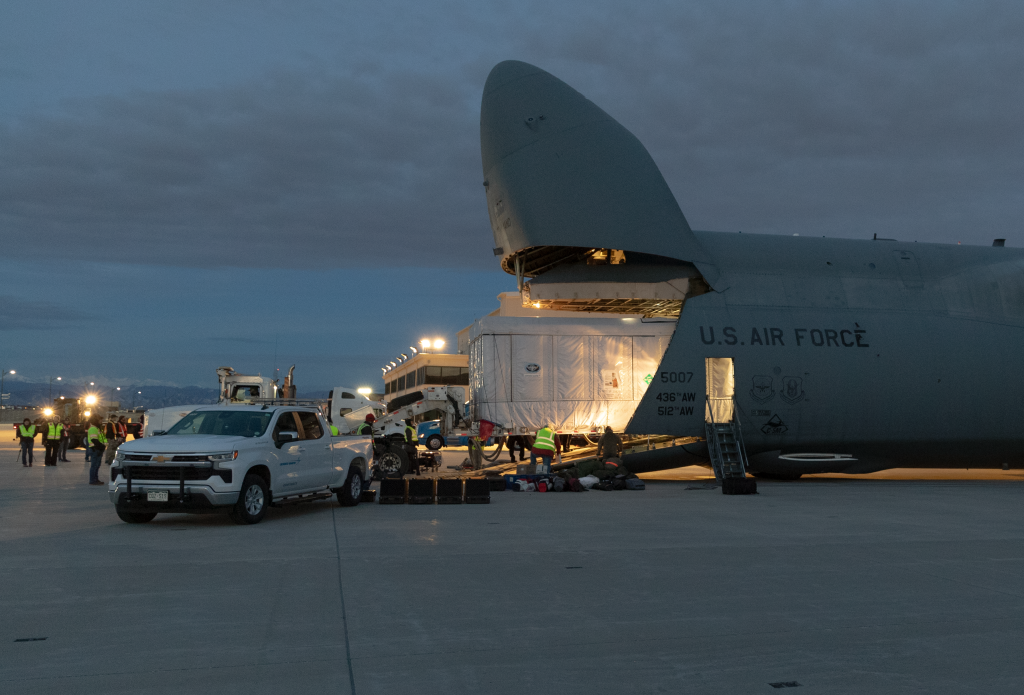Meteorologists use many tools when interpreting weather patterns and creating forecasts. One of these tools is satellite imagery. Here in the United States, imagery from NOAA’s GOES-18 Satellite is the most used, more specifically the GOES-R Series. According to NOAA, this satellite is “the Western Hemisphere’s most sophisticated weather observing and environmental monitoring system. The GOES-R Series provides advanced imagery and atmospheric measurements, real-time mapping of lightning activity, and monitoring of space weather.”
There are three main orbits that satellites can use. The lowest of them is known as the “Low Earth Orbit”, this places satellites about 99-1243 miles above the equator. The next is known as the “Medium Earth Orbit” which is typically between 6,200 and 12,400 miles above the equator. The highest of the three is known as “Geostationary Orbit”. This places the satellite at 22,236 miles above the equator as well as being geosynchronous with earth’s orbit, in other words, it orbits at the same speed as earth’s rotation. The GOES-R Series satellites have a Geostationary Orbit, this allows the satellite to seemingly be stationary so it can capture the same location.
The first of the GOES-R series was launched in 2016 and serves as the GOES East satellite. GOES-S was next, launching in 2018 and is currently used as an alternative option should a malfunction occur with the other satellites. GOES-T was launched in 2022 and serves as the current GOES West satellite.

What is the difference between GOES-R and GOES-16? Nothing! They are the same satellite. The only difference is that GOES-R was the name before its launch. Once it reached 22,236 miles above the equator, it was renamed to GOES-16. This is also the case with GOES-S (or GOES-17), GOES-T (or GOES-18) and now GOES-U.
GOES-U is the next in line to launch and will be the last of the GOES-R Series. According to NOAA, this satellite is set to operate well into the 2030s. The GOES-U will be renamed to GOES-19 and will take over from GOES-16 as the new GOES West satellite.
Just a few days ago, on January 22nd,2024, GOES-U started its journey towards launching when it was shipped from the Lockheed Martin facility in Littleton, CO where it was made, to the Kennedy Space Center in Florida. From there, it will undergo several tests to ensure that it is strong enough to withstand the launch. If it passes all of the testing, it will be launched at the Kennedy Space Center no earlier than April 30th, 2024.

What is next after GOES-U? According to NOAA, the next endeavor taken on by NASA and NOAA will be known as the “Geostationary Extended Observations” or GeoXO which will be the next generation of weather satellites. GeoXO will have cutting-edge technology that will observe the atmosphere, weather, and the ocean to help deal with environmental issues as well as improve forecasting.
Sources:
National Environmental Satellite, Data, and Information Service (NESDIS), NOAA. “GOES-U on the Road to Launch.” NOAA, 2024, www.nesdis.noaa.gov/news/goes-u-road-launch.
National Environmental Satellite, Data, and Information Service (NESDIS), NOAA. “Geostationary Satellites.” NOAA, www.nesdis.noaa.gov/our-satellites/currently-flying/geostationary-satellites.
